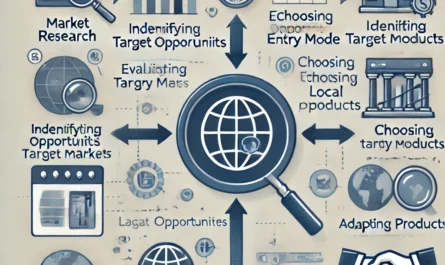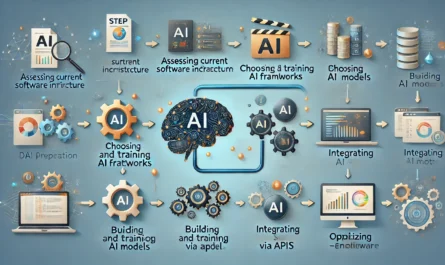Every successful business has one common trait: a clear and compelling long-term vision. In an increasingly complex and competitive marketplace, the ability to see beyond the short-term gains and visualize the future of your business is what separates thriving companies from those that fizzle out. Developing a long-term vision for your business strategy is not only about setting goals but creating a roadmap that defines where your business wants to be in the future and how it intends to get there.
A well-crafted business vision guides your decisions, inspires your team, and helps to navigate challenges that arise along the journey. This article will explore the steps and considerations for creating a long-term vision for your business strategy, ensuring that you are on the path to sustainable success.
What is a Long-Term Business Vision?
A long-term business vision is essentially the blueprint for your company’s future. It describes the desired position and goals of the business in five, ten, or even twenty years. While it doesn’t predict specific details of what the future holds, it lays out the overall direction in which the company will move.
A well-thought-out business vision includes clear aspirations, core values, and an understanding of the business’s purpose beyond just financial gains. It serves as a motivational tool for employees and a guiding light for decision-making.
Why Your Business Needs a Long-Term Vision
Why does your business need a long-term vision? The answer lies in the very nature of business itself: uncertainty. Markets fluctuate, consumer preferences evolve, and competition intensifies. Without a long-term vision, businesses can become reactive, struggling to adapt to changes without a clear sense of direction. Having a long-term vision offers the following advantages:
- Clarity and Focus: It allows you to concentrate efforts on activities that align with long-term goals.
- Motivation: A powerful vision inspires employees and stakeholders to work towards something greater than immediate tasks.
- Direction in Uncertainty: It helps your company stay grounded and focused even when external circumstances are unpredictable.
- Sustainable Growth: A long-term vision ensures that growth strategies are well-paced and sustainable over time.
Key Elements of a Business Vision
A well-articulated vision is built upon several core elements. These elements work together to form a cohesive, guiding statement that represents the future of your business. Let’s break down the components:
- Purpose: Why does your business exist? What is its core reason for being?
- Core Values: What are the guiding principles that shape your business’s culture and decision-making?
- Aspirations: What does your company want to achieve in the long run? This should be both inspirational and aspirational.
- Long-Term Goals: These are specific objectives that will help you move towards your vision.
By thoughtfully addressing these components, you lay the foundation for a vision that is both meaningful and actionable.
Aligning Vision with Strategic Planning
Strategic planning is the process by which a business translates its vision into a practical roadmap. Vision and strategy are deeply intertwined—without a vision, strategy can lack direction, and without strategy, vision can remain an unattainable ideal.
Your business strategy should be built around the long-term vision, ensuring that every action, investment, and initiative is aligned with the larger goals. Strategic planning provides the framework through which your vision becomes actionable, allowing your business to navigate the complexities of growth and competition while keeping sight of its long-term objectives.
Conducting a Vision Audit for Your Business
Before you can develop a new or refined long-term vision, it’s important to evaluate your current one. This is where a vision audit comes into play. A vision audit is a systematic process of reviewing the current vision to assess its relevance, clarity, and alignment with the business’s current state and future potential.
Start by asking yourself the following questions:
- Does the current vision align with our core values?
- Is the vision still relevant given market changes and industry shifts?
- Are employees and stakeholders engaged with and motivated by the current vision?
- Has the business outgrown its initial vision, and does it need to evolve?
The audit will help identify gaps and areas for improvement, providing the foundation for creating a stronger, more future-proof vision.
The Role of Leadership in Vision Creation
Leadership plays a pivotal role in developing and championing a long-term vision. Without strong leadership, even the most well-conceived vision will struggle to gain traction. Leaders are responsible for articulating the vision, making sure it is both inspiring and actionable, and for ensuring that it aligns with the company’s overall objectives.
Leaders also need to be adaptable. Business environments are in a constant state of flux, and so leaders must be prepared to revise the vision when necessary. This is not about compromising the long-term goals, but about adjusting the approach to ensure the company stays on course despite obstacles or shifts in the marketplace.
Setting SMART Goals for Long-Term Success
One of the most effective ways to ensure that your business vision is achievable is by setting SMART goals—Specific, Measurable, Achievable, Relevant, and Time-bound objectives. These goals help translate your broad vision into actionable steps, making it easier for the entire team to work towards long-term success.
SMART goals provide clarity, break down large objectives into manageable tasks, and enable better tracking of progress. For example, if your long-term vision involves becoming a leader in sustainability within your industry, a SMART goal could be: “Reduce carbon emissions by 20% over the next five years by implementing renewable energy solutions across all facilities.”
By using the SMART framework, you can turn aspirational visions into practical actions.
You can also read; How to Diversify Your Business for Greater Resilience
How to Communicate Your Vision to Stakeholders
Communicating your vision effectively is just as important as creating it. If your employees, customers, and partners don’t understand or believe in your vision, it will be difficult to align their actions with the long-term goals of the business. Here are key tips for communicating your vision:
- Simplify the Message: A vision should be easy to understand and convey.
- Be Consistent: Ensure that the vision is consistently communicated across all platforms and to all stakeholders.
- Make it Relatable: Help employees and partners see how the vision affects their roles and the business’s success.
- Incorporate Feedback: Engage stakeholders by incorporating their feedback into the vision where appropriate, showing that the vision is a shared goal.
Successful communication fosters buy-in, making it more likely that your team will be motivated and aligned with the long-term direction of the business.



